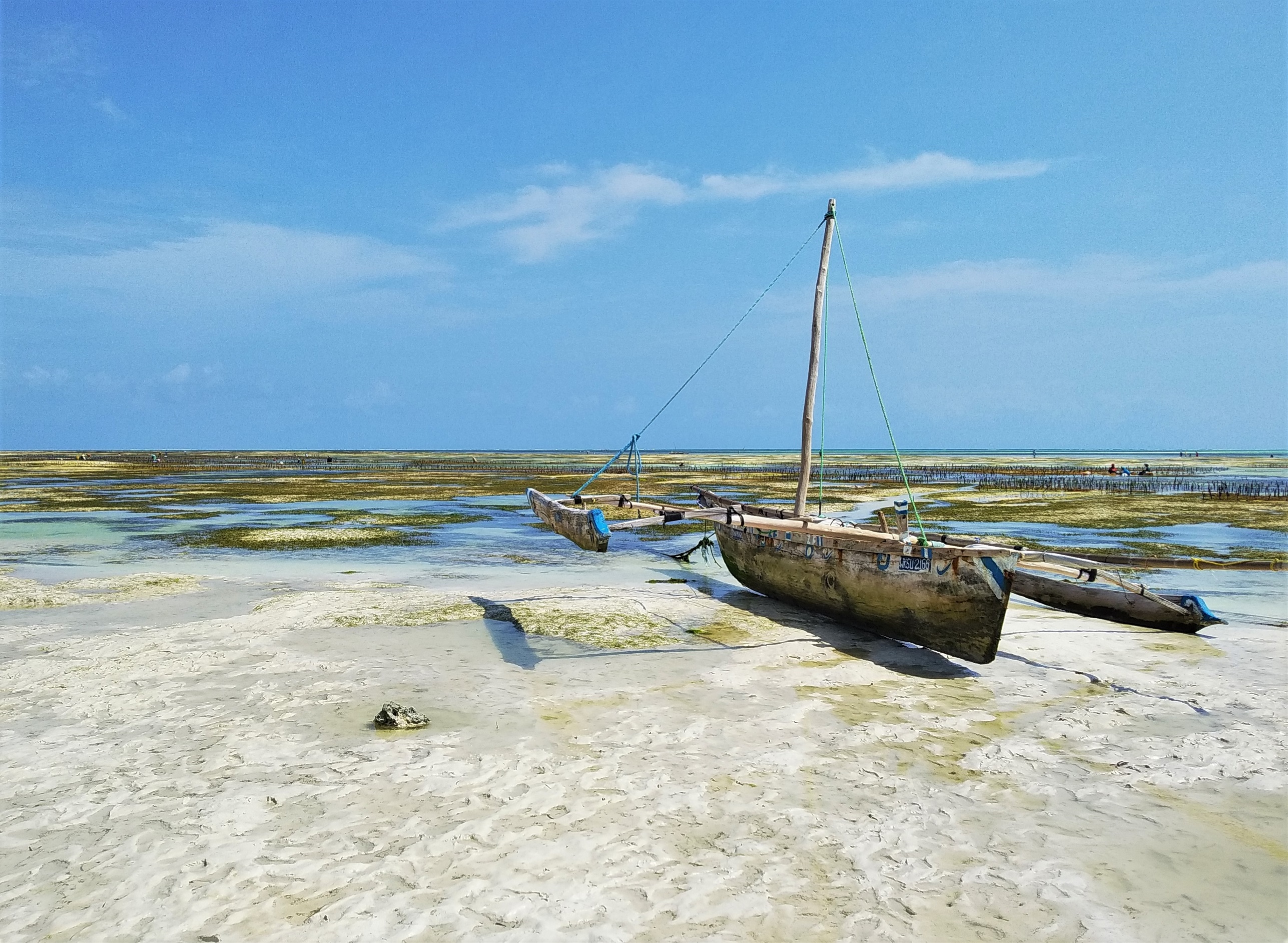Hi there my Hivean friends and followers!
Originally, I thought this post would be about two things that Zanzibar is famous for: the extreme tides and the tradition of seaweed farming that is actually related to the tides but after sorting out and editing the photo material for the post, I ended up with almost 40 images, which would be too much for one post so I decided to separate these two things. Therefore, in this post, we will take a look at the tides and next time (probably next week), I will introduce you to the tradition of seaweed farming on Zanzibar ;)
So the tides. You may wonder why I´m referring to the Zanzibar tides as extreme, right? Every sea and ocean have their tides, I know. I have already swum in many seas and oceans around the world but honestly, I have never seen such massive differences between the low tide and the hide tide as I just did on the Unguja Island of Zanzibar, an amazing tropical archipelago that is a part of Tanzania. I have already mentioned this phenomenon in my post with beach wildlife close ups last week and in this post, I will show you what it actually looks like through a series of a kind of time lapse shots.
The tides on Zanzibar are so important that there are actually several different websites where you can check out their times every day, like this one which says that today, on Tuesday, February 7, the first high tide is at 5:11 AM and the first low tide is at 11:28 AM while the second high tide of the day is at 5:34 PM and the second low tide is at 11:31 PM. That´s right, there are actually two high tides and two low tides on Zanzibar every day and it´s very important to know the exact times of them for the locals as the tides have a great influence on many activities and aspects of their life, especially on two of the traditional local jobs: fishing and seaweed farming.
However, tourists and visitors of the island are usually also interested in the times of the tides because it´s impossible to do any "water requiring" activities such as swimming, snorkeling, kiting, boating, paddle boarding etc. during the low tide because, well, there is no water by the beach and you would literally have to walk up to several miles into the ocean to find some deeper waters. On the other hand, these "walks into the ocean" are actually very cool and you can see a lot of interesting things and animals in the little natural pools and shallow waters along the way as I showed you in the above mentioned post with the wildlife close ups.
But enough talking. Without further ado, here is 16 pictures featuring the different stages of the tide. I took them at different spots and on different days but I tried to order them "chronologically" from the low tide to the high tide. Enjoy! :)
















I hope you liked the pictures. I said I took them at different spots but all of them are from the same coastal little town of Jambiani that is located on the southeastern coast of the Unguja Island. From what I have read on the internet, it seems that this particular area has the most extreme tides on the whole island and that´s probably also why Jambiani is the center of the seaweed culture that I will tell you more about in the next post. Until then... Hakuna Matata! :)
This post was created by me for the Hive blockchain exclusively. All rights reserved.








